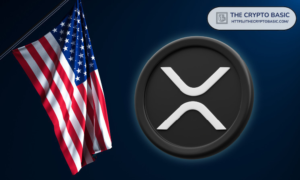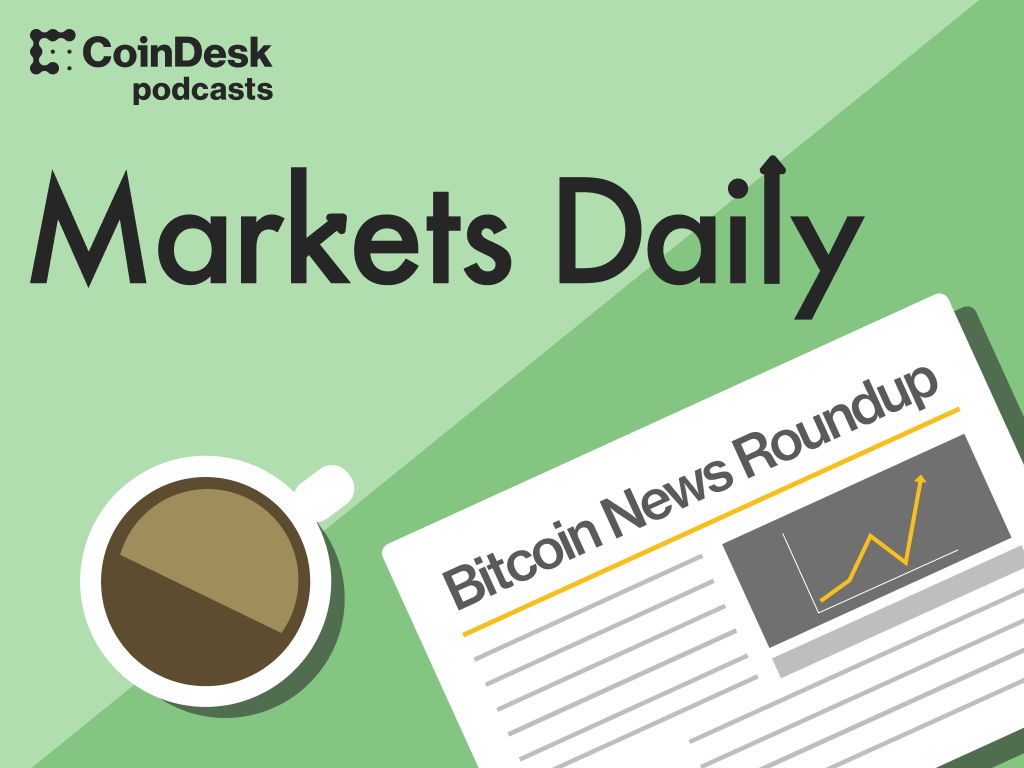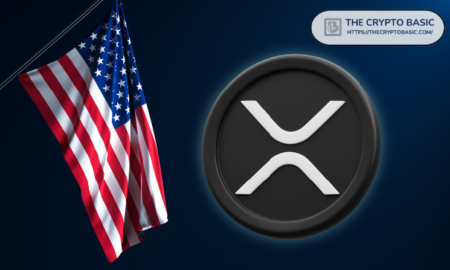Today’s episode is sponsored by CME Group and PayPal.
To get the show every day, follow the podcast here.
Today’s Stories:
Coinbase Officially Launches Base Blockchain in Milestone for a Public Company
Kraken Said to Seek Partner to Help Build It a Layer 2 Blockchain Network
Cryptocurrency Exchange OKX Coming Out With Layer 2 ‘X1’ Built on Polygon Technology
Bitcoin Miner Hut 8 Q3 Net Loss More Than Doubles as Production Slumps
Bitcoin Miner Marathon Digital Beats Q3 Earnings Estimates, but Misses on Revenue
From our sponsors:
CME Group Cryptocurrency futures and options provide market-leading liquidity for bitcoin and ether trading. These cash-settled contracts give full exposure to crypto performance without the hassle of holding the physical position. No digital wallet? No problem. Trade nearly 24/7 in a transparent, CFTC-regulated market. Visit cmegroup.com/crypto to learn more.
Disclaimer:
This communication is not directed to investors located in any particular jurisdiction and is not intended to be accessed by recipients based in jurisdictions in which distribution is not permitted. The information herein should not be considered investment advice or the results of actual market experience. Past results are not necessarily indicative of future performance. Trading derivatives products involves the risk of loss. Please consider carefully whether futures or options are appropriate to your financial situation.
–
PYUSD, a stablecoin made for Payments. 1USD = 1PYUSD.
Introducing PayPal’s new digital currency, PayPal USD (PYUSD), a stablecoin backed by U.S. dollar deposits, U.S. Treasuries and similar cash equivalents. Buy, sell, hold and transfer it in our app or site and explore Web3 with a payments brand that has been trusted for over 20 years.
Get started now at paypal.com/pyusd.
This episode was hosted by Noelle Acheson. “Markets Daily” is executive produced by Jared Schwartz and produced and edited by Eleanor Pahl. All original music by Doc Blust and Colin Mealey.
Audio Transcript: This transcript has not been edited and may contain errors.
It’s Wednesday, November 15th, 2023 and this is Markets Daily from CoinDesk. My name is Noelle Acheson, CoinDesk collaborator and author of the Crypto is Macro Now newsletter on Substack. On today’s show we’re talking about exchange developments, bitcoin miners, economic data and more. So you don’t miss an episode, be sure to follow the podcast on your platform of choice, and turn on notifications. And just a reminder, CoinDesk is a news source and does not provide investment advice.
Now, a markets roundup.
Crypto markets are looking more positive today, but have yet to walk back yesterday’s sharp drop. According to CoinDesk Indices, at 9 a.m. eastern time this morning, bitcoin was trading down 1.2% over the past 24 hours, at 36,137 dollars. Ether is down 1.4%, trading at just over 2019 dollars.
Elsewhere, Solana is up 8.4%, Avalanche’s token is up almost 13% Lido DAO’s token is up 14%. Kronos up 15%. It certainly looks like interest is picking up in small-to-midcap tokens.
In macro indicators, this week is a heavy one for key economic data points. Yesterday, we saw the softer-than-expected U.S. inflation rates for October. Today, we got another inflation indicator that confirms the slowdown in price increases. This comes from the U.S. PPI, or the producer’s price index, which measures the prices paid to domestic producers.
The year-on-year increase in September was 2.2%. Expectations were for an increase in October of 1.9%. The actual figure came in at a surprising 1.3%. Month-on-month, the PPI index actually declined half a percent, the steepest drop since April of 2020.
Very good news there.
Then we got US retail sales. Up until recently, the U.S. consumer has kept on spending despite higher rates and signs of a slowing economy. This raised concerns that bringing inflation down further will be tough. Well, today we saw a welcome sign that the growth in retail sales is slowing down.
On a year-on-year basis, U.S. retail sales grew by 4% in September, and only by 2.5% in October. Monthly growth was negative 0.1%, versus a positive 0.9% increase in September. While this may sound like good news to you, the market is not so happy about it because the monthly retail sales fell by less than expected. There’s no pleasing some people, I guess.
U.S. yields are heading up again after their sharp fall yesterday, with the 10-year currently back above 4.5%.
For some obviously not-so-good news, we head down to Argentina, which on Monday reported its latest inflation data. Annual inflation in Argentina is now 143%, which is hard to imagine. The country heads into a run-off election on Sunday, with the current economy minister Sergio Massa running against far-right candidate Javier Milei, who wants to get rid of the country’s central bank. This should be an interesting one to watch.
In stocks, the good news on inflation delivered some strong stock performances. The S&P 500 and the Nasdaq both recorded their strongest daily gain since April, with jumps of 1.9% and 2.4% respectively. The retail sales disappointment seems to have muted the excitement, however, and as we head in to record, futures are pointing to a muted opening.
The U.S. inflation data also worked its magic in European markets. Yesterday, the FTSE 100 managed to erase early losses to close two tenths of a percent higher, while the German DAX was up 1.8% and the broader Eurostoxx 600 climbed 1.3%. This morning is also looking strong.
Asian markets are also feeling positive, compounded by a move from the Chinese central bank to pump the largest amount of cash since 2016 into the banking system in a bid to stimulate lending. Japan’s Nikkei index was up 2.5%, the Shanghai Composite closed up half a percent, and the Hang Seng index soared by almost 4% today.
In commodities, oil prices are slightly weak, as expectations of higher demand heading into winter is being offset by the apparent easing of supply concerns stemming from the conflict in the Middle East. Earlier today, the Brent crude benchmark was down six tenths of a percent, trading at 82 dollars and 37 cents a barrel.
Gold jumped yesterday as the dollar plummeted after the U.S. CPI results. The metal continued up this morning, at one point passing above 1,970 dollars per ounce, but dropped sharply after the disappointing US retail sales figures came out. Gold is currently trading flat on the day, at 1,963 dollars per ounce.
Stay with us – after the break we’re going to talk about how bitcoin miners are doing and why it matters, as well as an intriguing trend I’m seeing in crypto exchanges.
Welcome back! In this section, we’re going to look at some news from bitcoin miners, but first…
There’s an interesting trend emerging in crypto exchanges. They’re launching their own layer 2 blockchains. As a brief introduction in case you’re not familiar, layer 2 blockchains are built on top of layer 1 or base blockchains such as Bitcoin or Ethereum, with the goal of enhancing scalability, speed and flexibility. Transactions are executed on the layer 2, and then periodically batched and anchored to the relevant layer 1. The two largest layer 2s are Arbitrum and Optimism, which now host billions of dollars in value, and have thriving developer communities of their own.
This summer, Coinbase launched its own layer 2 chain, called Base, which has since risen to become the third largest layer 2 in terms of value locked in applications on the network. Last week, we heard that Kraken was seeking a partner to develop a layer 2 network. And yesterday, OKX, the sixth largest crypto exchange in terms of volume, announced that it is launching a layer 2 called X1.
Why are exchanges doing this? Why move beyond focusing on earning profits via trading services?
The big-picture reason is ecosystem growth. More applications and a wider range of networks should broaden crypto activity, much of which is likely to find its way onto exchanges. This is the rising tide lifts all boats approach. Also, even for individual exchange businesses, the investment can make sense. It makes it easier for developers to access exchange tools, which should boost exchange activity. It helps exchanges cultivate developer communities which can lead to the development of original new products. And it broadens the potential user base for an exchange’s trading and custody services.
Stepping back again, as more exchange layer 2s are rolled out, we could see new types of market collaborations emerge, perhaps between the exchange networks. This could have the market-wide benefit of making the flow of funds and assets around the ecosystem even more fluid.
Next, it’s time to take a look at bitcoin miners, something I haven’t done before on this podcast. I’m not going to talk about individual bitcoin mining stocks, even though they are a listed way to get exposure to the bitcoin price. Rather, I’m going to touch on why we should pay attention to their earnings.
This came to mind yesterday as I was reading CoinDesk’s report on the Q3 results of bitcoin miner Hut 8. The firm said that third quarter revenue was almost half what it was in Q3 2022, and that its net loss had more than doubled. This is obviously not great news for the company or its shareholders. But it’s worth looking at why, and what this means for the market.
Often, when a bitcoin miner’s revenue and profits fall, it’s to do with the bitcoin price. Lower bitcoin prices mean lower income from the sale of mined bitcoin. But the bitcoin price in the third quarter was much higher than this time last year, so that’s not the problem here.
Another factor is often the level of difficulty of bitcoin mining. This is an automatic algorithm adjustment that keeps the pace of transaction blocks steady – when more processing power comes onto the network, the difficulty climbs in order to make it more power-intensive to process transactions and receive new bitcoins. More power-intensive usually also means more costly to mine.
In the case of Hut 8, the main culprit was apparently some issues with a couple of the firm’s mining sites, and the loss of revenue from mining on Ethereum after the move to proof-of-stake is also a hit.
Here’s why mining results matter for the bitcoin price:
If a bitcoin miner is struggling, it has an incentive to sell all the newly mined bitcoin, to cover operating costs. When the price is relatively low, it has to sell more bitcoin than when the price is high. This brings selling pressure into the market, which in theory could keep the price low.
In the third quarter results of bitcoin miner Marathon Digital, released last week, the firm revealed that it had sold 66% of mined bitcoin during the quarter. That’s significant.
As the price climbs, however, bitcoin miners need to sell less in order to cover costs. This means less selling pressure. Also, as the market recovers and as miners start to do better, it is easier for them to get financing to help cover costs, which means even less new bitcoin entering the market.
Now, I don’t know how many bitcoins Hut 8 sold in the third quarter, nor how many Marathon Digital is selling now. But miners are worth watching because the health of bitcoin miners is a key part of the health of the bitcoin market.
Read the full article here








